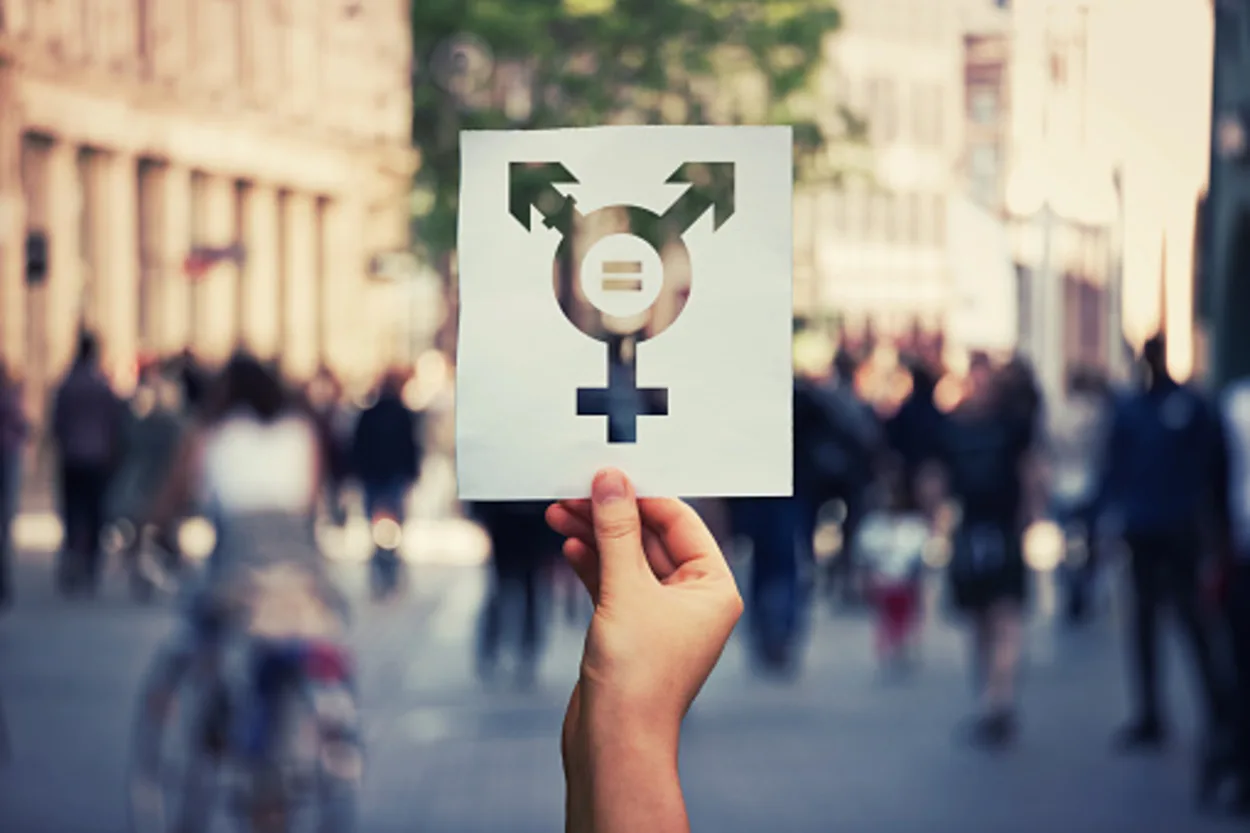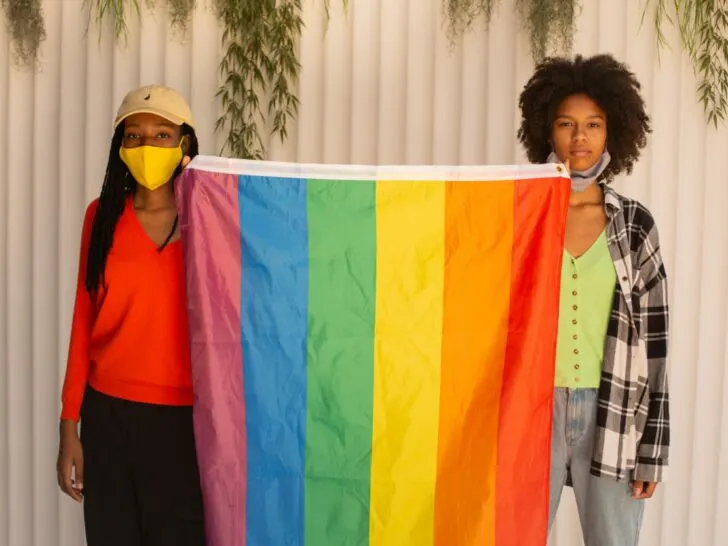Sexuality is a word we use to talk about how we understand our bodies and how we understand relationships. This understanding includes all aspects of who we are: our values, beliefs, bodies, desires, relationships, gender, and thoughts and feelings about all of these things.
This can be either same-sex, male-female, or bisexual. You can identify as gay, lesbian, bisexual, straight, or pansexual.
Omnisexuality refers to someone who is attracted to all people regardless of gender, while omniromantic is a romantic tendency in which a person is attracted to all genders and sometimes prefers a specific gender.
Please continue reading to more to know more about omnisexuality, omniromantic, and what sets them apart differently.
What Is Sexuality?
Sexuality often refers to a person’s sexual orientation or preferences. We have emotional and physical needs, on the basis of which our sexual orientation is formed.
Sexuality can also refer to a person’s ability to have sexual feelings. More than reproductive needs, the libido is an important part of human emotional expression and deep connection with others.
Many lesbian, gay, bisexual, transgender, and intersex people live happy and fulfilling lives. However, not all experiences are created equal.
Stigma, discrimination, violence, and exclusion can also cause some to suffer from poor mental health.
Let’s have a look at the types of sexuality and what they stand for.
| Type of Sexuality | Description |
| Homosexual | Attraction to the same-sex gender |
| Heterosexual | Male-Female attraction |
| Bisexual | Attraction toward one or more gender |
| Pansexual | Attracted to people regardless of their sex |

Importance Of Sexuality
Sexuality is an integral part of being human. We all at some point need love, affection, and a healthy relationship for our personal well-being.
It is very enjoyable and represents an activity that is a rite of passage into adulthood because it strengthens our roles and aspirations as men and women.
But in addition to the good things about human sexuality, there are also conditions, difficult emotions, and unforeseen outcomes that may harm one’s sexual health.
WHO states that independence from organic problems, diseases, and deformities that impair sexual and reproductive function is one of every person’s fundamental rights.
What Is Omnisexual?
Being attracted to all sexual and gender identities is how omnisexual define their sexual orientation.
Multisexuality is a definition of omnisexuality. The term “multisexual” describes people who are drawn to other genders.
Pansexual, polysexual, and bisexual people are frequently grouped alongside omnisexual in this category.
There is no definitive way to identify someone as omnisexual, just like there are different sexual orientations. The phrases omnisexual and pansexual are frequently used interchangeably.
Omnisexuality And Relationships
It’s possible that your partner doesn’t know what omnisexual means. The list of sexual preference descriptors keeps growing over time as gender and sexual identities are better understood.
Some people think that adding more categories helps people move past their initial focus on gender. They also think that expanding the sexual spectrum provides flexibility to express sexual fluidity and clarifies sexual attraction or lack thereof.
Knowing your preference can help you communicate your needs and wishes to your partners, regardless of their gender identification or sexual orientation.
Respect for one another can help you see and value one another’s differences while also confirming your claimed identity.
What Is Omniromantic?
The phrase “omniromantic” refers to a person who finds romance in both genders.
Omniroms are not regarded as gender-blind, in contrast to pansexuals, and take gender into account when navigating love sentiments. Some individuals might prefer one or more genders to others.
June 6th is recognized as Omnisexual and Omniromantic Pride and Visibility Day.
As of May 9th, 2016, the omniromantic flag was made available online. Unknown are the author and the precise color meanings.
Difference Between Omnisexual And Omniromantic
While omnisexual refers to the sexual orientation in which a person experiences emotional, romantic, or sexual attraction towards persons of any gender identification, omniromantic is described as the romantic attraction to people of all genders, however, gender frequently still plays a factor in one’s attraction.
In contrast to omnisexuality, some people who identify as omniromantic may have a preference for the gender they find most attractive.
It’s acceptable that their desire for a woman may differ significantly from your attraction to a guy, another woman, or a non-binary person.
The act of being attracted to one gender may feel different than the act of being attracted to another for omniromantic people, even though they may be equally attracted to all genders. They may also think that some characteristics are appealing only to particular genders.
Like other members of the multisexual group, omisex people frequently encounter intolerance of their sexual identity. It can be challenging to locate literature regarding their particular orientation.

Are There Any Additional Differences Than The Type Of Attraction?
I wouldn’t say there is any other main differentiating factor rather than that attraction.
The small differences that can be conversed about related to the realization of an understatement of sexuality.
Omnisexual often find themselves confused as they don’t fit into a particular gender and therefore are bound to insult. In contrast, omniromantics feel a certain attraction towards a specified gender which gives them a clear path and idea as to which class of sexuality they belong to, and how to handle the situation likewise.
Those who identify as omnisexual have additional alternatives when selecting a spouse. It is your responsibility to explain to your partner the importance of having an orientation with someone who values their feelings if they are unaware of the label.
Do People Choose To Have A Different Sexuality?
There is no easy solution to that. According to scientists, a person’s genes and hormones have a crucial influence.
The majority of medical professionals, including those at the American Academy of Pediatrics (AAP) and American Psychology Association (APA), concur that sexual orientation is influenced by a complex interplay of biology, psychology, and environmental variables.
In general, according to the majority of medical professionals, sexual orientation is not something that a person consciously chooses. Instead, a person’s sexual orientation is merely a natural aspect of who they are.
Being sexually different in one’s orientation is not wrong. However, not everybody has such an opinion. People may find life challenging as a result of these types of ideas.

Other Terms Related To Omnisexual And Omniromantic
Pansexual
An attraction to persons on a sexual, romantic, or emotional level regardless of how they identify as a gender is known as pansexuality.
Consequently, cisgender, transgender, and non-binary people, as well as pansexual people, may all be attracted to one another.
It implies that they are drawn to others based on their personalities and other characteristics. But, they are not only attracted to people of a particular gender.
Bisexual
Bisexuals are persons who have the ability to create relationships and/or feelings of attraction to more than one gender. Bisexuality is a sexual orientation.
In a 2016 article, the Centers for Disease Control and Prevention noted that 5% of women and 2% of men identified as bisexual. According to these results, the LGBT community for both women and men may be made up primarily of bisexual persons.
Conclusion
- There is a sexual orientation, which refers to the genders that a person finds attractive.
- Omniromantic refers to a romantic orientation in which an individual is attracted to all genders, often with a preference for particular genders. Omnisexual refers to sexual attraction to all genders, where gender is part of the attraction.
- Many people are unsure of their sexual orientation range. Some people are bisexual but do not recognize it till they are older.
- Your initial course of action should be to discuss your sexuality with a reliable partner or member of your family if you have any doubts.
- Omnisexuality is currently being accepted as a real and accepted sexual orientation.

